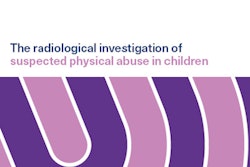Lossless compression and transfer of medical images should replace the dangerous, but alarmingly common, practice of sending files by regular mail in suspected cases of child abuse, according to radiologists from six leading U.K. pediatric hospitals.
About 75% of radiologists are reluctant to become involved in child abuse cases, largely due to poor training, personal inadequacy, and perceived lack of support from governing bodies. But there are fewer than 10 senior radiologists who can act as expert witnesses in suspected child abuse in the U.K., so in cases that require a second opinion, CDs or radiographs are often sent by post to one of these experts, explained Dr. Rebecca S. Leung, from London's Great Ormond Street Hospital for Children, in the June 2011 edition of Clinical Radiology.
In a bid to prove the efficacy and viability of transmitting lossless compressed images, Leung and her co-authors conducted a pilot study using technology from the U.K.-based vendor Cimar (Adaptive Binary Optimisation, or ABOve2000). A total of 131 images from 50 cases were assessed. Transfer times were between 30 and 300 seconds per case, depending on image volume, type, size, and bandwidth availability. Objective analysis of image quality confirmed 100% lossless transmission for all images (Clin Radiol, June 2011, Vol. 66:6, pp. 546-550).
"There are many potential benefits of using this technology: There are no CDs to be lost in the post, there is no delay in receiving images, and it enables group reporting of images of original quality, which can be accessed from anywhere. The information is encrypted and can be tracked by audit trail. The ability to control the deletion of remotely downloaded images is a further benefit," she wrote.
In the study, significant problems were encountered with the initial installation of the software, due primarily to interfacing with National Health Service (NHS) security systems. These problems were overcome by aligning the software to NHS information technology security protocols.
Cost-effectiveness was not considered in the pilot scheme, but this will be a key consideration in a much larger multicenter study being planned. Aside from the recognized problems and risks with CDs, it can cost around 20 pounds (22.2 euros, or approximately $33 U.S.) to send a CD by courier, so cost savings are possible here.
Looking ahead, the authors support the creation of a bank of anonymized images that would serve as a training and research tool in child abuse. The Radiology-Integrated Training Initiative (R-ITI) e-learning project developed by the U.K. Department of Health and Royal College of Radiologists, does not provide such teaching files for nonaccidental injury.



















